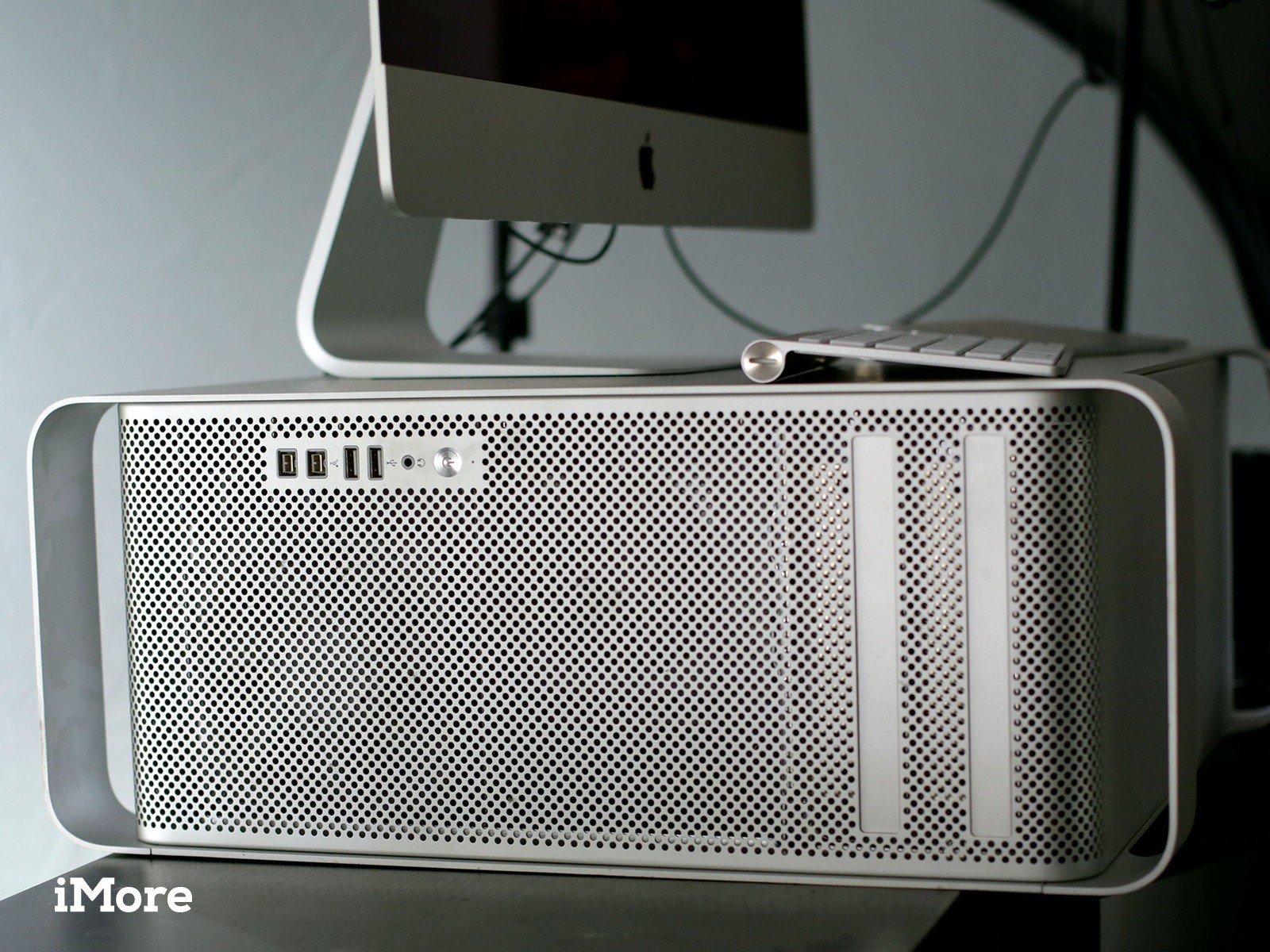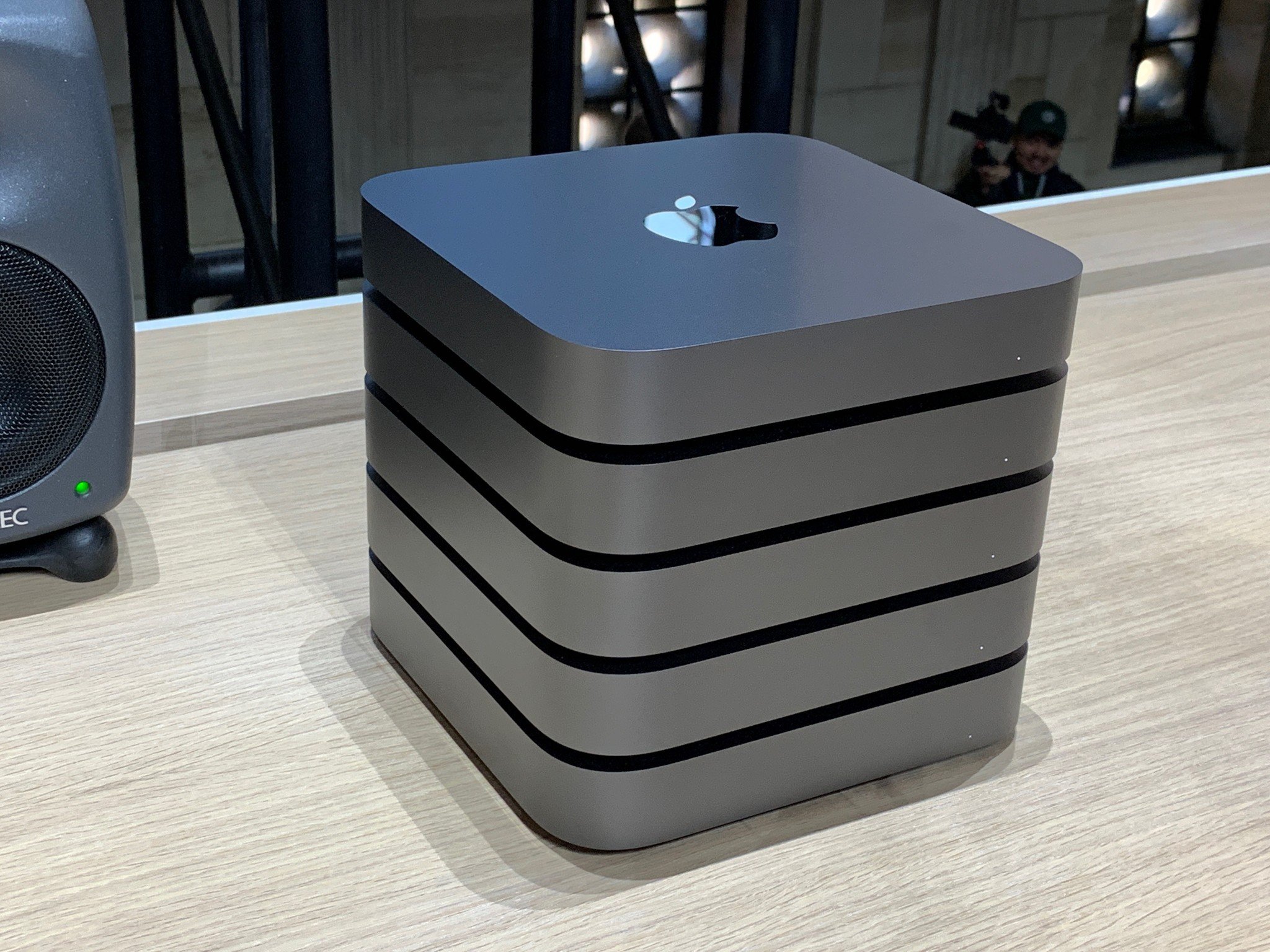There are two ways Apple could go with the new Mac Pro: Bring back the cheesegrater tower of old with new components for today's day and age, or go all-in on modules like a RED Camera system.
There's a new Mac Pro coming, hopefully as soon as this year. We could see a preview of it as soon as WWDC 2019 in June. But, a preview of… what exactly? That Apple has even been talking about it before any kind of official introduction is unprecedented, but hints aside, we still have no idea what it will be.
We do, however, know what we want it to be.
I asked Marques Brownlee, MKBHD, and Marco Arment what they wanted to see in the new Mac Pro. Hit play on the video above to hear what they had to say.
The Hints
Unlike almost any product in its history, Apple has gotten out in front of the new Mac Pro story. Probably because the old Mac Pro story was so battered. And burning.
So, as far back in April of 2017, Apple invited a very few people to a special meeting to discuss the future of the Mac Pro.
From John Gruber of Daring Fireball, quoting Apple's Senior Vice President of worldwide marketing, Phil Schiller:
With regards to the Mac Pro, we are in the process of what we call "completely rethinking the Mac Pro". We're working on it. We have a team working hard on it right now, and we want to architect it so that we can keep it fresh with regular improvements, and we're committed to making it our highest-end, high-throughput desktop system, designed for our demanding pro customers.
As part of doing a new Mac Pro — it is, by definition, a modular system — we will be doing a pro display as well. Now you won't see any of those products this year; we're in the process of that. We think it's really important to create something great for our pro customers who want a Mac Pro modular system, and that'll take longer than this year to do.
We're not going to get into exactly what stage we're in, just that we told the team to take the time to do something really great. To do something that can be supported for a long time with customers with updates and upgrades throughout the years. We'll take the time it takes to do that. The current Mac Pro, as we've said a few times, was constrained thermally and it restricted our ability to upgrade it. And for that, we're sorry to disappoint customers who wanted that, and we've asked the team to go and re-architect and design something great for the future that those Mac Pro customers who want more expandability, more upgradability in the future. It'll meet more of those needs.
Matthew Panzarino, who snuck the whole transcript up onto TechCrunch, also relayed this bit from Apple's Senior Vice President of software engineering, Craig Federigi:
I wouldn't say we're trying to paint any picture right now about a shape. It could be an octagon this time [laughter]. But certainly flexibility and our flexibility to keep it current and upgraded. We need an architecture that can deliver across a wide dynamic range of performance and that we can efficiently keep it up to date with the best technologies over years.
And Vice President of Hardware Engineering, John Ternus:
Some of our most talented folks working on it. I mean, quite frankly, a lot of this company, if not most of this company, runs on Macs.
This is a company full of pro Mac users.
Panzarino alone got to go back again last year for an update, and added this on TechCrunch from head of Mac Product Marketing, Tom Boger:
We want to be transparent and communicate openly with our pro community, so we want them to know that the Mac Pro is a 2019 product. It's not something for this year.
Perhaps most importantly, though, was an introduction to Apple's then-new Pro Workflows Team, the people who would be hammering the new Mac Pro, and all new Apple products, with real-world use cases, to make sure it fits the needs of real-world users.
We're getting a much deeper understanding of our pro customers and their workflows and really understanding not only where the state of the art is today but where the state of the art is going, and all of that is really informing the work that we're doing on the Mac Pro and we're working really hard on it."
To Marco's point, the Mac Pro needs to be the system without limits. All the CPU. All the GPU. All the memory. All the storage. All the IO.
According to Apple, Mac Pro represents a single digit of the customer base. Almost everyone buys MacBooks of one type or another, and of the few that do buy desktops, almost all opt for the all-in one iMacs. But, to misquote John Gruber, it's the lightness of all the other clamshell, all-in-one, appliance-style Macs that let the Mac Pro be so heavy. Or, at least, should.
Now, there are two distinctly different ways Apple could still go with that. The innie and the outie.
The Tower
The first option, and what many people say they want, is the simple, conservative, safe solution: Just go back to the damn cheese grater already. My Nehalem Mac Pro is probably the best traditional computer I've ever owned. It was — and is, since it's still up and running — a marvel of accessible design. Almost every part could be opened up and swapped out, with not so much as a screwdriver required.
Seriously, it's one of the most ingenious things they've ever made and just updating that concept with modern computing bits would make so many pros so happy.
Not all of them, mind you. There are some for whom even the cheese grater wasn't open enough, for whom only the Apple equivalent of a PC tower, with as close to unlimited potential for slotting and swapping would suffice.
macOS isn't Windows.
But there are some problems with this approach as well: One, it's not really modular. It's just configurable. Sure, you can swap memory and storage and cards, but you're stuck with whatever type are supported by the case you buy at the time. Everything PCIe 3 is great… until the moment PCIe4 drops. Being able to swap out the CPU is fine, until Intel changes the socket or Apple changes its silicon architecture.
Two, macOS isn't Windows. It's a software engineering miracle that Windows can boot up, day in, day out, in any number of innumerable configurations, but it can do that because Microsoft and vendors have coagulated into the Windows model.
Could Apple provide similar support for truly any card or contraption, now or going forward. And, would they if they could?
Look no further than Nvidia. There's nothing a segment of Mac pros want more than support for those cards and massive amounts of Cuda cores.
But, Apple and Nvidia still seem to be at loggerheads so…
The Modules
That brings us to the second option, which I'm guessing far fewer pros would think they want, and is also more complex, radical, and risky a solution: Consider that the 2013 Mac Pro's failure wasn't putting too little inside, but too much. That, if you push past the appliance line, a new type of computer could exist beyond it.
Drew from Tailosiv Tech and Jon Rettinger both did videos on this recently. And, while I haven't heard anything specifically about this, I have heard people, over the years, wonder out loud about a pro approach that would be less like the PC tower or even DSLR camera approach of old, and more like the RED camera system approach of now.
Consider that the 2013 Mac Pro's failure wasn't putting too little inside, but too much.
You get the base, the brain, that houses the CPU and just what it needs to be a functional CPU. And if the socket or even architecture changes over time, you can swap that module out for newer, better brains in the future.
Same with GPUs. eGPUs are already long past a thing. Apple even worked with Black Magic to make standard and Pro eGPU appliances for the MacBook and iMac lineups. Same not just with external storage but with external IO modules for external storage that, let's say when Thunderbolt 3 becomes Thunderbolt 4, you don't have to wait for Apple to introduce a new machine, or to justify buying a new machine, you can just swap out the module.
Some of those modules would no doubt be exclusive and proprietary to Apple, like the brain. Others could be partnerships — and because of external IO, still others could be just exactly what they are today, complete open third-party plug-in hardware.
But, of course, there are problems with this approach as well:
One, it's a bigger shot, which is great if Apple gets the three-pointer with nothing but net, but worse if they miss. Especially considering the current sentiment in the pro Mac community, which after years of feeling abandoned are just starting to warm back up to Mac mini updates and 32 GB options, even as many are still feeling excluded if not downright bit by the butterfly keyboards.
Two, making something truly modular is hard. The RED system is bulldog pretty, and that's pretty far afield from Apple's typical bead-blasted aluminum aesthetic. And modular phone systems have gone… pretty much nowhere.
Balancing clean with messy, power with flexibility, and function with form in a way that results in a real next-generation Mac Pro… Well, that's a design and engineering challenge for the ages.
To be continued...
Part of me just wants that updated cheese grater already. Keep it super damn simple stupid, and just give me the big CPU box with all the slots, get out of my way, and let me Mac Pro me.
The other part of me recognizes the past as the past and is really curious what the future of workstation computing looks like… in the future.
Most people will take modular to mean… whatever they want it to me. From slots to stacks, a single tower to one built from many blocks. Rumor has that, just like the 2013 Mac Pro and 2017 iMac Pro, we may just get our first glimpse of the all-new, all-next modular Mac Pro at WWDC this June.
from iMore - The #1 iPhone, iPad, and iPod touch blog https://ift.tt/2HaBES8
via IFTTT


No comments:
Post a Comment